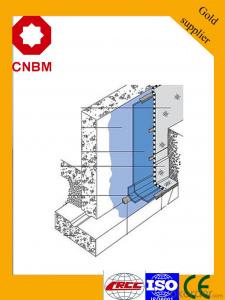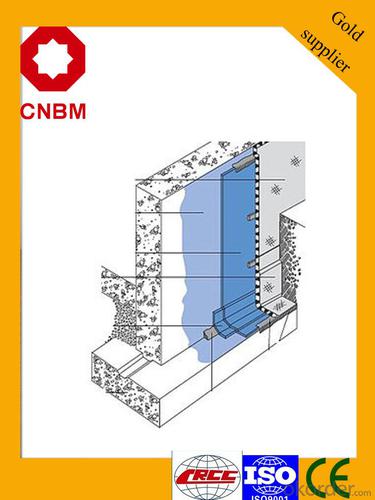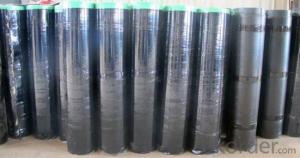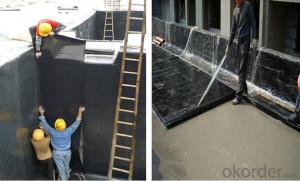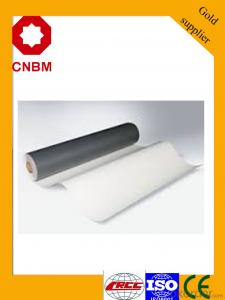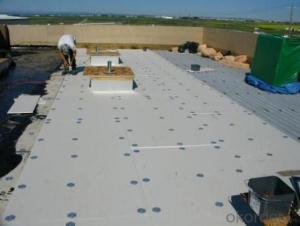SBS Waterproof Membrane APP Modified Bitumen Waterproofing Membrane Roof Waterproofing Membrane
- Loading Port:
- Shanghai
- Payment Terms:
- TT OR LC
- Min Order Qty:
- 44 roll
- Supply Capability:
- 100000 roll/month
OKorder Service Pledge
OKorder Financial Service
You Might Also Like
Product description
SBS modified bitumen waterproof membranes use high quality needle punched polyester mat or fiberglass compound mat as the base reinforcement. And use SBS modified bitumen as the dip-coat material. The SBS modified bitumen waterproof membrane are widely used for roof waterproof projects.
Main performance
1.Good low temperature performance, especially suitable for cold regions.
2.Good weather resistance, tensile property, extensibility, corrosion resistance and so on.
3.Strong adaptability for substrate shrinkage, deformation and cracks.
4.Convenient to apply: use heat fusion method in all seasons.
5. Meet national standards.
6.ISO Certification.
Technical Parameters
No. |
Item | Index | |||||||||
Ⅰ | Ⅱ | ||||||||||
PY | G | PY | G | PYG | |||||||
1 |
soluble content(g/m2) ≥ | 3mm | 2100 | — | |||||||
4mm | 2900 | — | |||||||||
5mm | 3500 | ||||||||||
test phenomenon | — | non-ignitable | — | non-ignitable | — | ||||||
2 |
heat resistance | °C | 90 | 105 | |||||||
≤mm | 2 | ||||||||||
test phenomenon | no flow or drippage | ||||||||||
3
|
low temperature flexibility °C | -20 | -25 | ||||||||
no flaw | |||||||||||
4
|
water tightness 30min
|
0.3Mpa |
0.2Mpa |
0.3Mpa
| |||||||
5 |
tension | tension of maximum peak rate%≥ | 500 | 350 | 800 | 500 | 900 | ||||
tension of maximum peak rate%≥ | — | — | — | — | — | ||||||
test phenomenon | no cracks or separate | ||||||||||
6 |
elongation
| elongation of maximum peak rate%≥ |
30 |
— |
40 |
— | |||||
elongation of second peak rate%≥peak rate%≥ |
— |
— |
15 | ||||||||
Product usage
The waterproof , dampproof and seepage-proofing of roof, basement, tunnel and so on.
Packaging and storage
1)Avoid insolating, raining; the temperature shall be 4-45°C;
2)Keep them stand up and vertical;
3)Do not stack up over two tiers, avoid tilting and lateral drift.
product show
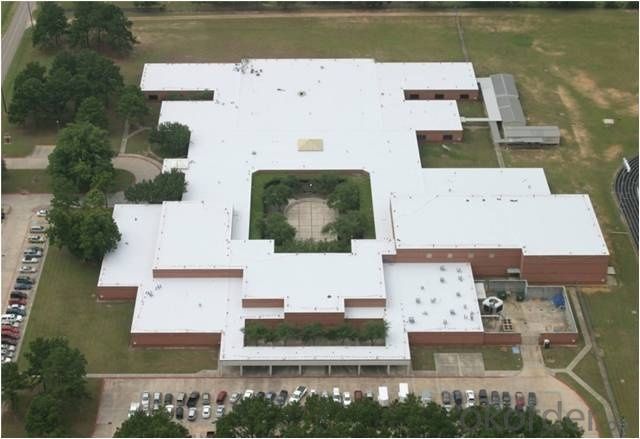
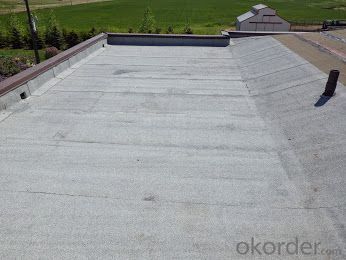
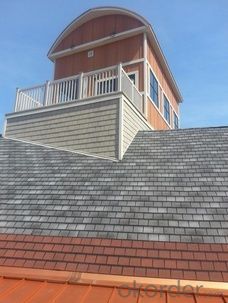
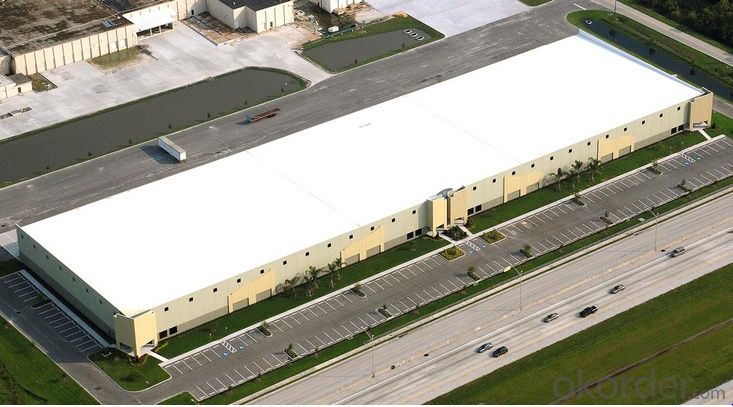
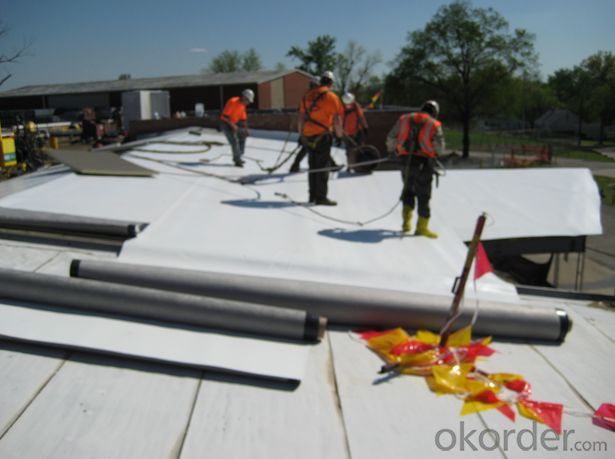
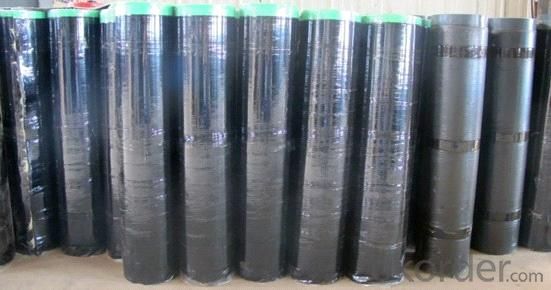
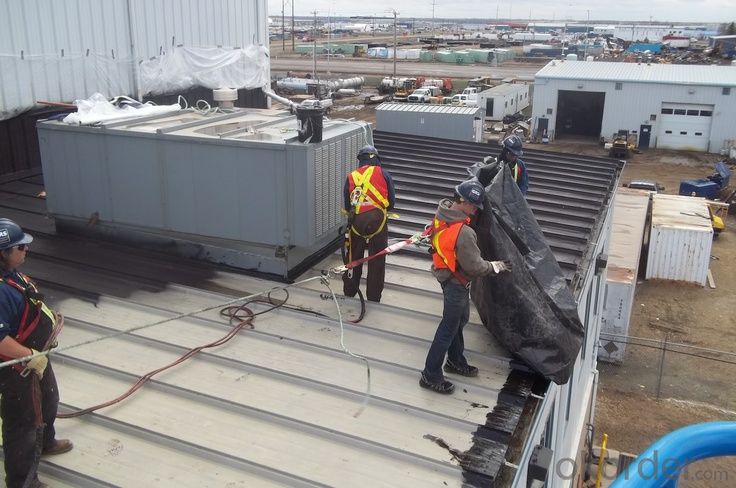


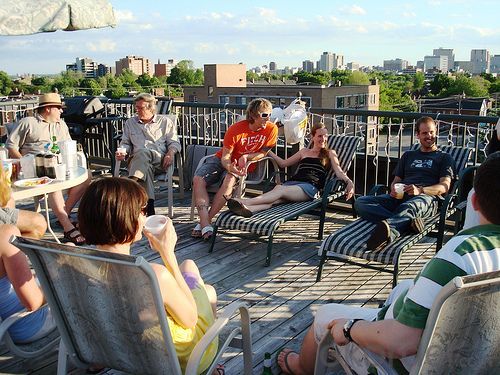
FAQ
Q: What's the delivery time ?
A: 3-5 days for 1-600 rolls, 10-15 days for container.
Q: What's the payment terms ?
A: TT/LC
Q: How do you make replacement with quality problems ?
A: New replacement will be packed into your next order or send to you directly after receive video or photo about quality problems.
- Q: Is a waterproofing membrane resistant to algae or moss growth?
- Yes, a waterproofing membrane is typically resistant to algae or moss growth. Waterproofing membranes are designed to create a barrier against water infiltration, preventing moisture from seeping into the underlying structure. These membranes are typically made of materials that are not conducive to the growth of algae or moss, such as synthetic polymers or rubberized compounds. Additionally, waterproofing membranes are often treated with additives that inhibit the growth of organic matter, including algae or moss. However, it is important to note that over time, if the membrane is exposed to constant moisture or damp conditions, it may become a breeding ground for algae or moss. Therefore, regular maintenance and cleaning are important to ensure the longevity and effectiveness of the waterproofing membrane.
- Q: Can a waterproofing membrane be used on roofs with slope?
- Roofs with slope can use a waterproofing membrane. It is commonly applied on sloped roofs to add an extra layer of protection against water infiltration. The membrane is typically placed beneath the roofing materials and acts as a barrier to stop water from seeping into the roof structure. This is particularly crucial for sloped roofs as water runoff is faster and may lead to leaks or damage. The waterproofing membrane is designed to be flexible and is able to adapt to the roof's slope without compromising its effectiveness. Moreover, it also enhances the roof's durability and lifespan by preventing moisture-related problems like rot or mold growth.
- Q: Does a waterproofing membrane prevent efflorescence or mineral deposits on surfaces?
- Yes, a waterproofing membrane can help prevent efflorescence or mineral deposits on surfaces. Efflorescence occurs when water-soluble salts in concrete or masonry materials dissolve and then migrate to the surface, leaving behind a white powdery residue. By preventing water from penetrating the surface, a waterproofing membrane can minimize the amount of water available to dissolve these salts and transport them to the surface. This can significantly reduce the occurrence of efflorescence. Similarly, mineral deposits can form on surfaces when water containing dissolved minerals evaporates, leaving behind the minerals as a residue. A waterproofing membrane can prevent water from reaching the surface, thereby reducing the formation of mineral deposits. However, it's important to note that while a waterproofing membrane can help minimize these issues, it may not completely eliminate them, especially if there are underlying issues with the material or water source. Regular maintenance and proper installation of the waterproofing membrane are also crucial for its effectiveness in preventing efflorescence or mineral deposits on surfaces.
- Q: Can a waterproofing membrane be used for a podium deck coating?
- Yes, a waterproofing membrane can be used for a podium deck coating. A waterproofing membrane is designed to create a barrier between the structure and the external environment, preventing water ingress and protecting the underlying surface. Podium decks, which are elevated platforms often found in commercial buildings or outdoor spaces, are susceptible to water damage due to exposure to weather elements. Applying a waterproofing membrane on the podium deck can effectively prevent water penetration and provide long-term protection against moisture-related issues such as leaks, mold, and deterioration. Additionally, some waterproofing membranes can also offer additional benefits such as UV resistance, crack bridging capabilities, and aesthetic enhancements. However, it is important to consider factors such as the specific requirements of the podium deck, the type of membrane being used, and the expertise of the applicator to ensure proper installation and compatibility with the deck substrate.
- Q: Can a waterproofing membrane be used on asphalt roofs?
- Indeed, it is a widely accepted practice to utilize a waterproofing membrane on asphalt roofs. This practice effectively bolsters their longevity and safeguards them against water-related harm. Typically composed of synthetic materials like modified bitumen or EPDM, the membrane forms an impermeable barrier, thwarting water infiltration. This fortification effectively prevents leaks and extends the lifespan of the asphalt roof. Furthermore, the waterproofing membrane can offer supplementary insulation and enhance energy efficiency within the structure. However, it is crucial to ensure that the chosen waterproofing membrane is compatible with asphalt and adheres to industry standards of performance and durability. It is highly recommended to consult with a professional roofing contractor or manufacturer to determine the most suitable waterproofing membrane for asphalt roofs.
- Q: Can a waterproofing membrane be used for an underground structure?
- An underground structure can indeed benefit from the use of a waterproofing membrane. Essentially, this membrane acts as a protective barrier, safeguarding the structure against water infiltration. It is commonly employed on various areas, including roofs, basements, and other regions prone to water seepage. When utilized in an underground structure, like a basement or foundation, the waterproofing membrane serves as a shield, obstructing any water present in the surrounding soil or groundwater. Its primary function is to prevent water seepage, which has the potential to inflict harm on the structure and give rise to issues such as mold growth or structural deterioration. To achieve a watertight seal, the waterproofing membrane is typically applied to the exterior walls and foundation of the underground structure. Choosing a high-quality membrane that is specifically designed for underground use and adheres to industry standards is of utmost importance. Furthermore, proper installation techniques, such as surface preparation and sealing of seams, are critical in ensuring the effectiveness of the waterproofing membrane in an underground structure.
- Q: Are waterproofing membranes suitable for tunnels?
- Tunnels can benefit from the use of waterproofing membranes. These structures often face significant water pressure from the surrounding soil and groundwater, making them susceptible to water entering. Waterproofing membranes are specifically designed to create a protective barrier that prevents water infiltration into the tunnel. These membranes are typically crafted from durable materials like bitumen, PVC, or EPDM rubber. These materials possess a resistance to water penetration, making them ideal for the task. Once applied to the tunnel walls and ceiling, they form a continuous and impermeable layer that effectively keeps the tunnel dry. Additionally, the membranes are flexible, allowing them to adjust to any movement or settlement within the tunnel while maintaining their waterproofing integrity. Apart from their water-blocking capabilities, these membranes offer other advantages for tunnels. They can shield the structure from corrosion caused by water and chemicals, thereby prolonging the tunnel's lifespan. Furthermore, they can improve the indoor air quality by preventing the growth of mold and mildew, which tend to thrive in damp environments. Moreover, waterproofing membranes can be tailored to suit the specific conditions of different tunnels. For instance, in tunnels exposed to high levels of hydrostatic pressure, reinforced membranes with greater tensile strength can be used to withstand the additional stress. Similarly, tunnels that prioritize fire safety can utilize membranes with enhanced fire resistance properties. In conclusion, waterproofing membranes provide a dependable and efficient solution for ensuring the durability, safety, and longevity of tunnels. By serving as a robust barrier against water ingress, they effectively safeguard these structures.
- Q: Can a waterproofing membrane be used on brick surfaces?
- Yes, a waterproofing membrane can be used on brick surfaces. The membrane can be applied to protect the brick from moisture, water infiltration, and potential damage caused by water absorption.
- Q: Can a waterproofing membrane be used on tunnels with emergency exits?
- Yes, a waterproofing membrane can be used on tunnels with emergency exits. In fact, it is highly recommended to use waterproofing membranes in tunnels to protect them from water infiltration and potential damage. These membranes create a barrier against moisture, preventing leaks and ensuring the structural integrity of the tunnel. Emergency exits can also be effectively waterproofed using appropriate membranes to maintain their functionality in case of emergencies.
- Q: Can a waterproofing membrane be used for roofing applications?
- Indeed, a waterproofing membrane can be utilized in roofing applications. Specifically designed to create a barrier against water infiltration, waterproofing membranes are commonly employed in a range of construction projects, including roofs. These membranes typically consist of durable materials like synthetic rubber, thermoplastics, or modified bitumen, renowned for their water-resistant properties and longevity. By installing a waterproofing membrane on the roof, one can effectively safeguard the building from water leaks and moisture penetration, which may result in structural damage, mold growth, and other related problems. The membrane is typically applied seamlessly onto the roof surface, forming a watertight layer that prevents water from permeating through. Waterproofing membranes for roofing applications are available in various types, such as sheet membranes, liquid or spray-applied membranes, or self-adhering membranes. Each type offers distinct advantages and suitability depending on the specific roofing requirements and construction conditions. In conclusion, a waterproofing membrane is indeed a viable choice for roofing applications, providing an efficient solution to ensure a durable and watertight roof system.
Send your message to us
SBS Waterproof Membrane APP Modified Bitumen Waterproofing Membrane Roof Waterproofing Membrane
- Loading Port:
- Shanghai
- Payment Terms:
- TT OR LC
- Min Order Qty:
- 44 roll
- Supply Capability:
- 100000 roll/month
OKorder Service Pledge
OKorder Financial Service
Similar products
Hot products
Hot Searches
Related keywords
